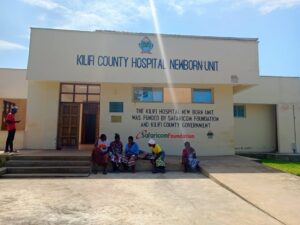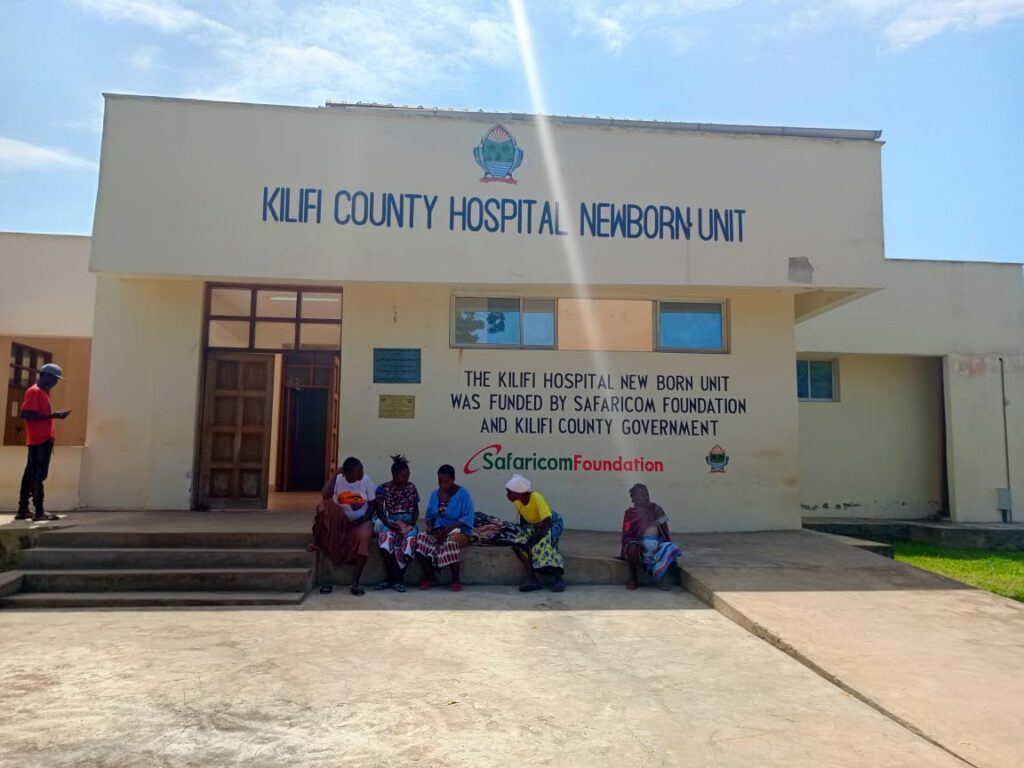By Caroline Katana
Diarrhea is a leading killer of children, accounting for approximately 9 percent of all deaths among children under age 5 worldwide since 2021.
This translates to over 1,200 young children dying each day or about 444,000 children a year despite the availability of a simple treatment solution.
Every day 2,000 African children die from diarrhea, entirely preventable deaths.
Nine out of ten cases of diarrhea can be prevented by safe water and sanitation-proven cost-effective interventions.
Unfortunately, the burden of diarrhea remains high and inadequately characterized owing to the complex interplay that the environment, food, water, and sanitation have with poverty and deprivation.
Despite this, today only four in ten Africans have access to a basic toilet due to poor cultures and traditions against toilet use.
There is an increasing recognition that children remain at elevated risk of death following discharge from health facilities in resource-poor settings.
Worldwide 780 million individuals lack access to improved drinking –water and 2.5 million lack improved sanitation.
Diarrhea due to infection is widespread throughout developing countries, in low–income countries, children under 3 years old experience on average three episodes of diarrhea every year.
As a result, diarrhea is a major cause of malnutrition and malnourished children are more likely to fall from diarrhea.
Kenya is not exceptional in diarrhea burden, a population-based surveillance study from Kenya showed differences in prevalence of diarrhea between rural and urban residents, where rural residents were identified as more at risk.
Household income and wealth index are determinants for diarrhea in children under five, children between 6- 24 months were identified as the most susceptible to contracting diarrhea.
In Kenya health care spending from the national budget remains low despite the commitments made to increase health sector funding by 16 percent.
Kilifi is one of the six counties in the coast region of Kenya, covers an area of 12,370.8 km2, and has a population of 1,453,787 people (KNBS, 2019) of which 202,076 (13.9%) are children under five years old.
A large proportion of children (87.6%) who reported to be ill sought treatment from health facilities with the least seeking treatment from traditional healers at 0.4%.in
In 2019 Kilifi county was leading by achieving community-led total sanitation with two sub-counties Kilifi North and Rabai achieving 100 percent open defecation–free and target 90 percent to all villages by 2022 to combat deaths caused by diarrhea, especially amongst children below 5 years, however, Kilifi county still recognize an increase that children remain at risk of death after discharge from health facilities, diarrhea being highlighted as a risk factor for post-discharge mortality.
Since then at least three sub-counties, Kilifi North, Rabai, and Kilifi South have achieved open defecation free, targeting ODF to all the sub-counties by the end of 2024 or early 2025.
Kilifi Ministry of Health through the water and toilet hygiene head of department Abdullah Munga, confirmed the gap between the sanitation interventions and the post-morbidity and mortality following diarrhea is a result of loss of focus on sanitation and hygiene interventions by Kilifi MOH and other stakeholders.
“We are not doing well in Kilifi in matters of sanitation and hygiene, this is an issue of concern that requires a multi-stakeholder approach in filling the intervention gap, we have witnessed children with diarrhea admitted in our pediatric units but after discharge, they contaminate bacteria. We have to invest more to save the lives of children,” said Munga.
In 2023/2024 Kilifi County Department of Health recorded 104,618 cases of children with diarrhea in health facilities.
“These numbers are very high and we need to put up measures to bring it down, diarrhea is still a bigger problem here in Kilifi, we don’t have clear data but I believe some children re-contaminated bacteria and viruses and die,” he added.
Munga said that Kilifi County is highly burdened by open defecation, saying top 10 diseases recorded in Kilifi health centers are a result of poor sanitation and hygiene.
“According to 2019 census statistics, Kilifi County was ranked among the top 15 counties in Kenya practicing open defecation, among the top 10 diseases due to poor sanitation and hygiene. We have diarrhea, skin, eye disease among other sanitation diseases,” he noted.
Kilifi County has recorded an achievement in toilet use, at least 85 percent of the Kilifi population use toilets.
“This is a good gesture and a big milestone for our people in maintaining hygiene, they have improved within a short time but we want to work on the remaining 15 percent by the end of this year to ensure ODF, building toilets aim to prevent the spread of feces that contaminate water in dams, also this will encourage the community to wash hands,” He added.
A clinician at Kiwandani dispensary Daniel Rangu, said they record 30 to 80 cases of diarrhea every month.
“Diarrhea cases vary, depending on weather, in a month 30 cases of diarrhea can be recorded, another month 80, we normally record 1 to 2 cases per day,” said the clinician.
Josephine Bahati Kazungu, a mother of 4 children at Kiwandani, narrates how she spent four days in the pediatric unit at Kilifi Hospital with her 12-month-old third-born baby after getting malnourished due to diarrhea and dehydration.
“After being diagnosed with diarrhea with dehydration at Kiwandani dispensary, I was referred to Kilifi hospital where my son got four days admission, his chances of surviving were slim but I thank God, he was introduced to oral rehydration solution {ORS), a mixture of clean water, salt and sugar, it is absorbed in the small intestine and replaces the water and electrolytes lost in feces, he also was given nutrients foods because he was malnourished to break the vicious circle of malnutrition and diarrhea,” she said.
Community health promoter from Sokoni ward Khadija Said admitted poor sanitation and hygiene to be the major cause of high cases of diarrhea among children below 5 years in the Sokoni ward.
“The reality is that there is poor sanitation and lack of access to readily accessible water, even when water is available there are contamination risks majorly due to open defecation and poor waste management,” she said.
At the same time, she added that the sanitation situation is personal.
“Community Health Promoters have committed themselves to sensitizing and creating awareness to the community to ensure 100 percent proper sanitation and hygiene to curb diarrhea among children,” she added.
Culture and traditions
Some communities still believe that women should not use a toilet because they cannot mix their stool with that of their fathers-in-law.
Some families associate diarrhea with a curse or witchcraft hence seeking treatment from traditional healers.
Open defecation made it easier for those who sought to bewitch others to access their intended victim’s feces; anyone could easily access a family’s open defecation site and use the feces there to cast a spell of misfortune on a certain family.
Causes of diarrhea
Diarrhea is a disease caused by a wide range of pathogens, including viruses, protozoa, and bacteria, there are several most life-threatening viral and bacterial pathogens affecting individuals among them is rotavirus which is the leading cause of acute diarrhea and is responsible for about 40 percent of all hospital admissions .unsafe water, sanitation and hand washing is the leading risk factor in Kilifi county
Eradicating open defecation is vital in achieving basic health care because it reduces the number of patients affected by poor hygiene. An estimated 1,400 children under the age of five die each year because of diarrhea directly linked to lack of access to safe water, sanitation, and hygiene.
Interventions by Kilifi County MOH
The county government of Kilifi is increasing access to safe and affordable drinking water as well as improving sanitation facilities and hygiene practices.
It is also strengthening the capacity of community health promoters, creating awareness on hand washing and proper use of toilets, and installation of the water treatment plant at Mtondia.
Kilifi County Executive Committee Member (CEC) in charge of Health and Sanitation Peter Mwarogo said post-mortality is highly contributed by poor sanitation and hygiene in communities.
“Environmental factors, stool disposal practices in the household, dirt floor, and thatch roof materials of the household unit are risk factors for diarrhea disease, many a times mothers are sensitized about sanitation and hygiene while in hospitals but unfortunately after discharge still their kids get re-infections,” he said.
He confirmed areas like Ganze and Bamba are often hit by drought, the area has long suffered from food shortages and poverty leading to severe malnutrition in children.
“The area has faced various health–related issues including a shortage of health facilities and healthcare workers, limited access to safe and clean water, and a high maternal mortality rate,” he added.
Approximately 18 cases of diarrhea were recorded in Magarini sub-county during the heavy rains this year.
At the same time, the CEC urged communities to shun away from cultures and traditions that destroy them healthily and instead change their behavior from negative to positive.
“Communities should embrace the sanitation and hygiene education given to them by our community health promoters, Kilifi County has over 4 thousand trained CHPs who are creating awareness on matters of sanitation and hygiene,” said Mwarogo.
According to the Kilifi County Integrated SMART survey of 2023, the focus was on children aged 6-59 months, assessing disease incidence, the survey delved into symptoms presented, whether caregivers sought healthcare for their ill child, and if so, where.
The survey outcomes revealed that 53.6% of children had experienced illness, with a substantial 86.4% of them having sought medical attention.
Among the caregivers, the majority turned to public clinics (64.5%) as their primary choice for seeking healthcare, followed by private clinics (23.1%).
The leading incidence of illnesses was ARI/Cough at 28.7% followed by fever chills/malaria at 10.9% watery.




